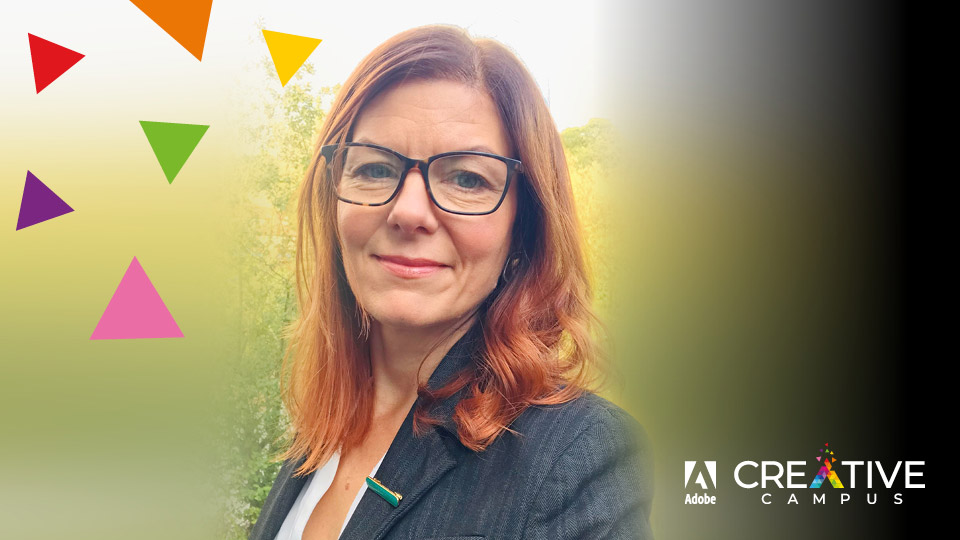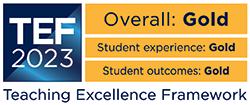Rachel Dodd
As Europe's first higher education institution to become an Adobe Creative Campus, Teesside University is committed to promoting digital literacy within the global higher education community.
Rachel Dodd, Senior Lecturer in Digital Journalism, School of Arts & Creative Industries, shares how she has been using Adobe applications to enhance her teaching methods and further improve the experience of her PR & Digital Journalism students.

Adobe products have helped me enhance my digital skills, aligning with Teesside University's commitment to digital literacy as part of our Future Facing strategy.
Which Adobe products have been most useful in your teaching?
I have been using Adobe applications to produce bespoke teaching materials suitable for second year BA (Hons) PR & Digital Communications and MA Multimedia Public Relations students. I created a portfolio of teaching content using Adobe Spark webpages and videos, as well as customisable branded assets and social media templates, which improved student engagement with our modules.
Using Adobe Spark has provided me with an interactive and engaging way of producing a media library of branded teaching materials which I can easily revise to be repurposed for other modules.
Has the use of Adobe products changed your teaching style?
The use of Adobe products in my teaching has meant a welcome shift from traditional methods such as lecturing using PowerPoint slides, and workshop sessions. By being an early adopter of Adobe Spark I have been able to improve student engagement through innovative teaching content, especially welcome during times of lockdown and hybrid teaching.
I have produced various learning and teaching resources using Adobe Spark, such as reading materials, research content and asynchronous activities. I have been able to embed these materials easily into Teams channels and Blackboard folders which has offered students an interactive interface through which to deliver learning and teaching.
Adobe products have also helped me enhance my own digital skills, aligning with Teesside University's commitment to digital literacy as part of our Future Facing Learning strategy. Adobe Spark is a great example of multi-platform multi-device technologies working seamlessly to enable creative learning journeys that can be student-led and process-driven.
Do you think students have benefitted from the changes in your teaching?
Using Spark for teaching materials has improved student engagement by providing more interactive content available across a wider range of platforms which are easily accessible and adaptable.
Student feedback was hugely positive as they suggested that Spark provided a more engaging interface for lectures and activities:
'Personally, I think the spark presentation is a lot more visually engaging than standard PowerPoints and would be far better for most content.'
'I like the idea of using Spark for our modules, it will be a lot more engaging.'
How have your students been using Adobe products?
During Semester one, students were given the option to submit formative and summative assessments using Adobe Spark pages and videos. This allowed students to create more engaging, interactive, and seamless pieces of work, that previously would have been made using a disconnected range of media, including Word documents, image files and MP4 files.
Spark provides students with a broad range of ways to bring their ideas to life in a far more creative and impactful way than before, which doesn't require a high level of skill in applications such as Photoshop.
Will the student experiences help them when they enter the workplace?
By encouraging students to use Adobe applications like Spark, they have been given a means of demonstrating a creative and collaborative edge, showcasing skills development and creativity valued in our future workplaces.
